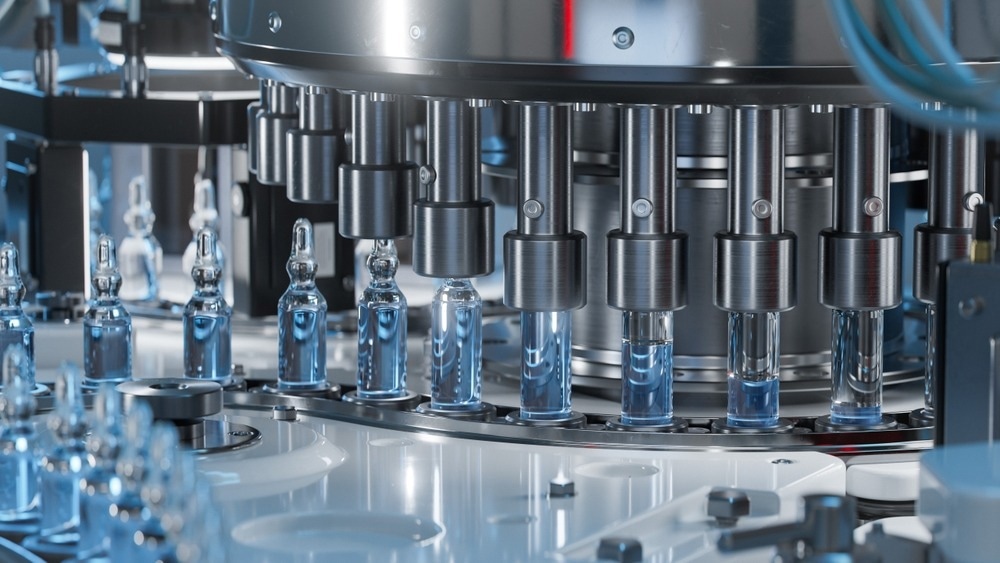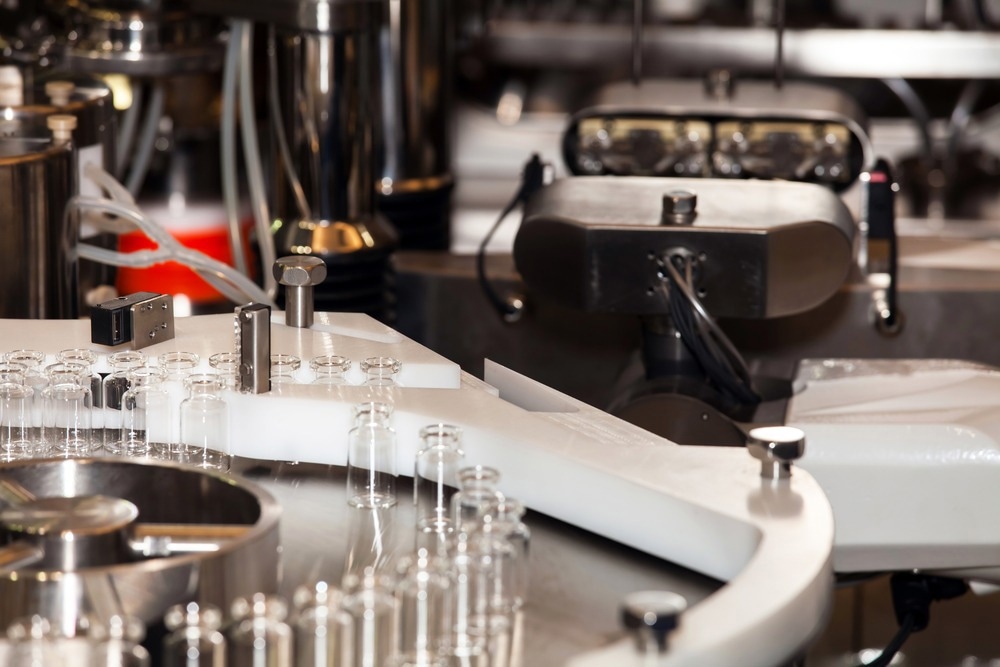Why is aseptic processing important in pharmaceutical manufacturing?
Innovations in aseptic processing technology
The role of regulatory compliance
The future outlook of sterile manufacturing
Conclusion
References
Further reading
Why is aseptic processing important in pharmaceutical manufacturing?
The manufacturing of both sterile drugs and biological products can be achieved through terminal sterilization or aseptic processing.
Terminal sterilization involves filling and sealing containers under specific environmental conditions to prevent the contamination of these products from microbial and particulate matter. After this process has been completed, the final product is often subjected to heat, irradiation, or another sterilization process.
Typically, aseptic processing is employed when terminal sterilization is not feasible for manufacturing sterile drugs. To this end, aseptic processing begins with sterilizing the drug product, as well as its container and any closures, separately before assembling these materials together.

Image Credit: IM Imagery/Shutterstock.com
The sterilization methods involved in aseptic processing often vary depending on the individual part being handled. For example, glass containers are often subject to dry heat, whereas liquid drug products are subjected to filtration, and rubber closures are sterilized through moist heat.
Since the Aseptic Processing Guidelines were originally published by the United States Food and Drug Administration (FDA) in 1987, several updates have been made to clarify personnel qualification, cleanroom designs, process designs, quality control measures, environmental monitoring methods, and review of production records.
Like the original guidelines intended, these updates aim to minimize exposure of sterile drug products and materials to potential contamination hazards that may be involved in the manufacturing operation.
Innovations in aseptic processing technology
Numerous advancements over the past several decades have revolutionized the landscape of aseptic processing. Notably, the implementation of automation into advanced aseptic processing technologies has largely eliminated the need for human operators to be involved in these processes, which significantly reduces the risks associated with human contamination.
Automated aseptic processing is typically monitored through computerized systems that ensure quality robustness while also allowing for production continuity to meet growing market demands.
Likewise, robotic operations have also become crucial for automated aseptic processing as they allow for the smart management of data while providing detailed records of all operations. These robotic systems are equipped with various sensors that can immediately detect any drift trends and/or manufacturing nonconformities. As a result, corrective and preventive actions can be promptly executed to limit any potential production losses while also ensuring the consistent quality of final drug products.

Steriline isolators equipment, robotic asepting compounding system. Image Credit: Alexander Tolstykh/Shutterstock.com
Moist-heat sterilization remains the most widely used sterilization method for aseptic processing. Although most component sterilization methods have remained unchanged for several decades, suppliers of both glass and elastomeric stopper container systems have increasingly manufactured these products in ready-to-sterilize or ready-to-use conditions to optimize production processes.
Like traditional sterilization methods, product filtration methods have also remained largely unchanged for the past several decades. Nevertheless, filter vendors have become increasingly focused on optimizing pre-filtration processes to ensure that these systems meet the specialized needs of their intended application.
The role of regulatory compliance
All aseptic manufacturing processes are conducted in a cleanroom that must meet various regulatory requirements to ensure the sterility and quality of drug products. Typically, a clean room can be divided into two areas: the critical area and supporting clean areas.
The critical area is defined as the location in which the sterilized drug product, containers, and closures are exposed to environmental conditions that must maintain the product's sterility. In this area, the drug product is particularly vulnerable to potential sources of contamination; therefore, the environment must remain completely sterile.
Some of the ways in which the environmental quality of both critical and supporting clean areas is maintained are through the utilization of air handling systems that are designed to minimize particle content. Importantly, particles can act as extraneous contaminants when they encounter a drug product or lead to contamination by carrying microorganisms to the product.
Various technologies can be used to ensure air quality within the cleanroom, including high-efficiency particulate air (HEPA) filters applied at a velocity sufficient to push particles away from filling/closing areas and maintain unidirectional airflow throughout the cleanroom.
Technological advancements have also led to the development of highly sophisticated isolation systems, which separate the external cleanroom environment from the aseptic processing line. Processing isolators can be classified as closed, in which connections with auxiliary equipment are used to allow for material transfer, and open isolators, which are equipped with carefully engineered openings to the surrounding environment.
The future outlook of sterile manufacturing
New therapies such as radiopharmaceuticals, as well as gene and cell therapies, are being developed at an unprecedented rate, thus necessitating the need for highly sophisticated, effective, and specialized aseptic manufacturing processes. Importantly, biologics like gene therapies, transplant tissue, monoclonal antibodies, and recombinant proteins will degrade when exposed to high temperatures, thus eliminating the potential use of terminal sterilization in the manufacturing of these products.
Despite the challenges associated with maintaining aseptic conditions for the production of these novel biologics, these products are highly susceptible to microbial contamination due to the manual manipulations involved in their manufacturing. As these novel therapies begin to receive approval for use in the general population, closed systems equipped with single-use technologies (SUTs) will become increasingly relied upon to achieve complete closure during biomanufacturing.
Some of the different closed systems that would likely be incorporated into these manufacturing designs include closed bioreactors, media and reagent delivery systems, sampling and monitoring systems, harvest and purification systems, waste management systems, and integrated control and automation systems.
Conclusion
Current estimates indicate that over $10 billion United States dollars (USD) is spent each year treating hospital-associated infections (HAIs) throughout the U.S. Therefore, in addition to emphasizing the importance that healthcare providers maintain sterile conditions within clinical settings, medicinal products must be manufactured according to aseptic guidelines to reduce the risk of contamination and ultimately ensure patient care and safety.
References
- “Guidance for Industry Sterile Drug Products Produced by Aseptic Processing” Available from: https://www.fda.gov/regulatory-information/search-fda-guidance-documents/sterile-drug-products-produced-aseptic-processing-current-good-manufacturing-practice.
- Agalloco, J. P., Akers, J. E., & Madsen, R. E. (2020). Aseptic Processing Practices: Reviewing Three Decades of Change. BioPharm International 33(8); 27-31. Available from: https://www.biopharminternational.com/view/aseptic-processing-practices-reviewing-three-decades-of-change.
- “Automation to guide technology shift in aseptic environments” Available from: https://www.europeanpharmaceuticalreview.com/news/183014/automation-to-guide-technology-shift-in-aseptic-environments/#:~:text=In%20an%20aseptic%20environment%2C%20a,systems%2C%20thus%20ensuring%20quality%20robustness.
- Greven, B. (2023). Innovations and Trends in Aseptic Manufacturing Processes. BioPharm International 36(0); 21-23. https://www.biopharminternational.com/view/innovations-and-trends-in-aseptic-manufacturing-processes.
- “Managing Risk in Aseptic Processing Environments” Available from: https://www.genengnews.com/insights/managing-risk-in-aseptic-processing-environments/.
- Boom, F. A., Ris, J. M., Veenbaas, T., et al. (2022). Reducing the risk of non-sterility of aseptic handling in hospital pharmicies, part A: risk assessment. European Journal of Hospital Pharmacy 29(3); 151-156. doi:10.1136/ejhpharm-2019-002178.
Further Reading
Last Updated: May 8, 2024